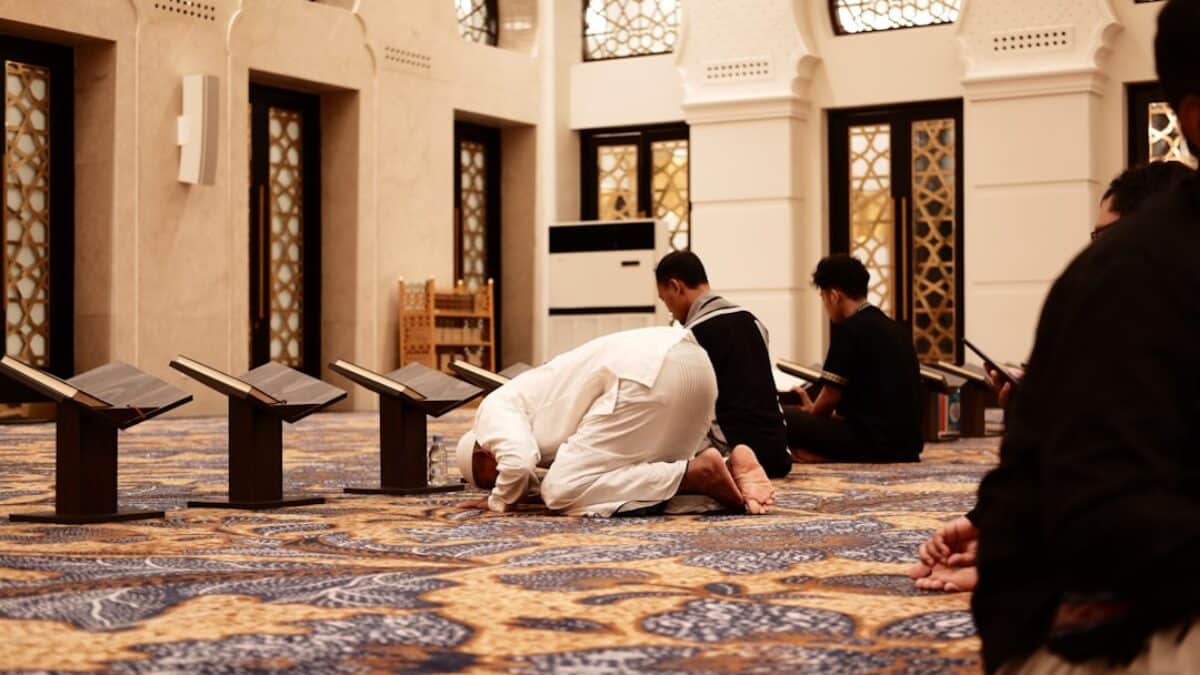The gentle call to prayer drifts through the early-morning air, and excitement bubbles inside countless homes around the world. Ramadan is here! For children, this sacred month can feel like a magical blend of family fun, sparkling lights, special foods, and, most importantly, an opportunity to grow closer to Allah. Yet learning to fast, pray, and thrive during Ramadan can also seem daunting. This joyful, step-by-step guide transforms the journey into an adventure tailored for kids, parents, and educators alike. From practical preparation tips to creative activities, we will walk together through every stage—so that by the end of the month, children will feel proud, spiritually nourished, and eager for next year.
Understanding Ramadan Through a Child’s Eyes
Before diving into schedules or rules, it is crucial to frame Ramadan in ways that resonate with a child’s natural curiosity and love of stories. Children need concrete images and hands-on experiences to grasp abstract spiritual concepts. When we describe Sawm (fasting) as “a super-power shield that keeps our hearts safe from naughty whispers,” or Taraweeh prayers as “a night-time treasure hunt for Allah’s mercy,” we open doors of imagination that later blossom into genuine devotion.
What Makes Ramadan Special for Kids?
- Glow-in-the-dark lanterns (fanous) and colorful lights create a festive atmosphere in many Muslim-majority countries and diaspora communities.
- Family Iftar feasts become daily celebrations with favorite foods, storytelling, and gratitude circles.
- Charity projects let children decorate donation boxes, pack food parcels, or distribute toys to neighbors in need.
- Sticker charts track fasting milestones, Qur’an verses memorized, or extra good deeds.
Key Islamic Concepts Simplified
When talking to kids, distill big ideas into bite-size truths:
- Sawm: We give our tummies a break so our hearts can talk to Allah.
- Iftar: We break the fast together because sharing food doubles the barakah (blessings).
- Laylatul Qadr: One night is better than a thousand months—like finding a golden ticket inside the Qur’an.
- Eid al-Fitr: A giant thank-you party with gifts, games, and sweet treats at the end.
Key Components of Ramadan for Kids
Every successful Ramadan experience rests on four pillars for children: Preparation, Fasting, Worship, and Celebration. Below we unpack each pillar with step-by-step action plans, age-specific adaptations, and troubleshooting tips.
Preparation: Building Excitement Two Weeks Before
1. Create a Ramadan Countdown Chain
Cut 30 strips of colored paper. On each strip, write a mini-deed such as “Say a kind word,” “Help set the table,” or “Recite Surah Al-Ikhlas three times.” Staple the strips into a chain and remove one every evening at Maghrib. Watching the chain shrink fuels anticipation and reinforces daily good habits.
2. Decorate the Home with Kids as Creative Directors
- Hang crescent-and-star fairy lights in bedrooms.
- Craft a “Ramadan Mubarak” banner from recycled cardboard and glitter.
- Design a “Good Deeds Tree”: add a paper leaf for every thoughtful action.
3. Practice Mini-Fasts
Younger children (ages 4–7) can fast from snacks for one hour after lunch. Tweens (8–11) can try a half-day fast on weekends. Teens (12+) may begin full-day fasts with parental guidance. Emphasize that the goal is training, not torture—if anyone feels dizzy, they are praised for trying and encouraged to break the fast with water and dates.
Fasting: Step-by-Step Guide for Different Age Groups
Ages 4–6: “Fasting with My Toys”
Introduce symbolic fasting. A teddy bear named Barakah Bear “fasts” from sunrise to sunset by keeping his snack in a special pouch. The child helps open the pouch at Iftar, learning the sequence without physical strain.
Ages 7–10: “The Half-Day Heroes”
- Suhoor: Offer a light meal—oat-banana smoothie and two dates—30 minutes before Fajr.
- Daytime Rules: No food or drink from sunrise to 12 p.m. Encourage quiet activities: coloring Qur’anic verses, listening to nasheed playlists, or reading Ramadan storybooks.
- Early Iftar: Break the fast with water, dates, and a fruit salad followed by a nap or rest.
Ages 11–15: “Full-Day Champions”
At this stage, the body is usually strong enough for full fasting. Focus on:
- Hydration hacks: Two glasses of water at Suhoor plus cucumber slices for electrolyte balance.
- Study schedule: Shift homework to post-Iftar when energy is higher.
- Peer support: Create a WhatsApp group called “Fast & Flourish” to share progress, memes, and encouragement.
Worship: Kid-Friendly Acts of Ibadah
Salah: Prayer Adventures
Turn prayer times into quests. For example, Fajr is the “Dawn Shield” that protects the rest of the day. Encourage kids to design a superhero badge they can “activate” after praying.
Qur’an: Story-&-Snack Method
Read three verses of Surah Al-Qamar, then enjoy a popcorn break while discussing the story of Prophet Nuh. Repeat daily until the entire Surah is completed.
Duas & Dhikr: Pocket Praise Cards
Print business-card-sized dhikr cards—SubhanAllah, Alhamdulillah, Allahu Akbar. Kids shuffle the deck, pick three cards, and recite each 10 times while walking to school or waiting in line.
Celebration: Joyful Iftar & Eid Countdown
Transform the final 10 nights into a “Charity Carnival”:
| Night | Activity | Learning Goal |
|---|---|---|
| 21 | Bake cookies for neighbors | Generosity (Sadaqah) |
| 23 | Make Eid cards for hospital patients | Empathy |
| 25 | 30-minute Qur’an speed-recite challenge | Confidence in recitation |
| 27 | Tahajjud pajama party with parents | Love for night prayer |
Benefits and Importance of Early Ramadan Training
Child development experts and Islamic educators agree that early, positive exposure to Ramadan fosters lifelong spiritual resilience. Below are evidence-based benefits:
- Neurological Discipline: Fasting trains the prefrontal cortex, the brain’s impulse-control center, leading to better focus during school exams.
- Emotional Intelligence: Sharing Iftar plates with the less fortunate cultivates gratitude and reduces materialistic tendencies.
- Family Bonding: Pre-dawn meals and post-Taraweeh discussions create durable memories and intergenerational stories.
- Identity Security: Children who proudly explain fasting to non-Muslim classmates develop confidence in their heritage, inoculating against peer pressure.
A 2025 study by Islamic Social Services Association found that children who engaged in at least one creative Ramadan activity per week reported 30% higher levels of spiritual satisfaction than peers who followed a routine-only approach.
Practical Applications: Weekly Schedules, Recipes, and Reward Systems
Sample Weekly Timetable for Ages 8–10 (School Days)
Monday–Thursday:
05:00 – Light Suhoor: yogurt parfait with berries 05:30 – Fajr prayer + Qur’an review (5 verses) 07:30 – School (carry a reusable water bottle for non-fasting hours) 12:00 – Lunchroom role: read a Ramadan storybook in library corner 15:30 – After-school snack (if not fasting) or quiet board game 18:30 – Help set Iftar table, recite dua aloud 19:15 – Maghrib prayer, break fast with dates 20:00 – Homework & Taraweeh at mosque (first 4 rak’ahs) Friday–Sunday:
Flexible half-days or full fasts depending on stamina Special project: create a Ramadan vlog episode for grandparents
Kid-Approved Suhoor and Iftar Recipes
Power-Packed Suhoor Smoothie
- 1 banana
- 3 soaked dates
- 1 tablespoon chia seeds
- 1 cup oat milk
- Dash of cinnamon
Blend until creamy. Serves one child with sustained energy for 6–7 hours.
Fun-Shaped Mini Pizzas for Iftar
Use star and moon cookie cutters on pita bread. Top with tomato sauce, cheese, and halal pepperoni. Bake 10 minutes at 180 °C. Kids love arranging toppings themselves—an edible art project!
Reward Systems that Nurture Sincerity
Instead of material bribes, adopt intrinsic-reward techniques:
- Deed Beads Bracelet: Add one bead for every extra prayer or good deed. By Eid, the bracelet becomes a tangible pride badge.
- Ramadan Passport: Stamp pages for acts such as “Donated toy,” “Memorized Surah,” or “Helped cook.” Present the passport to relatives on Eid to collect congratulations “visas.”
- Kindness Jar: Family members drop notes describing each other’s good actions. Read the notes under the Eid prayer mat for a surprise confidence boost.
Frequently Asked Questions
What is the right age for kids to start fasting?
Islamic jurisprudence does not impose fasting before puberty, but training can start gradually as early as age five. Begin with symbolic fasts (skipping candy) and progress to partial-day fasts by age eight. Always prioritize health: if a child experiences dizziness, persistent headache, or unusual fatigue, break the fast immediately and consult a pediatrician.
How can parents handle crankiness or low energy during fasting hours?
Plan quiet-time zones—puzzles, audiobooks, or coloring mandala patterns. Encourage power naps of 20 minutes after Dhuhr prayer. A small, cool towel on the forehead helps regulate body temperature. Praise emotional regulation: “I noticed you stayed calm when your brother took your toy—that’s saber power!”
Is it safe for athletic kids to continue sports practice?
Light to moderate exercise is permissible, ideally after Asr prayer when temperatures cool. Schedule low-intensity drills (yoga stretches, light jogging)
























Post Comment